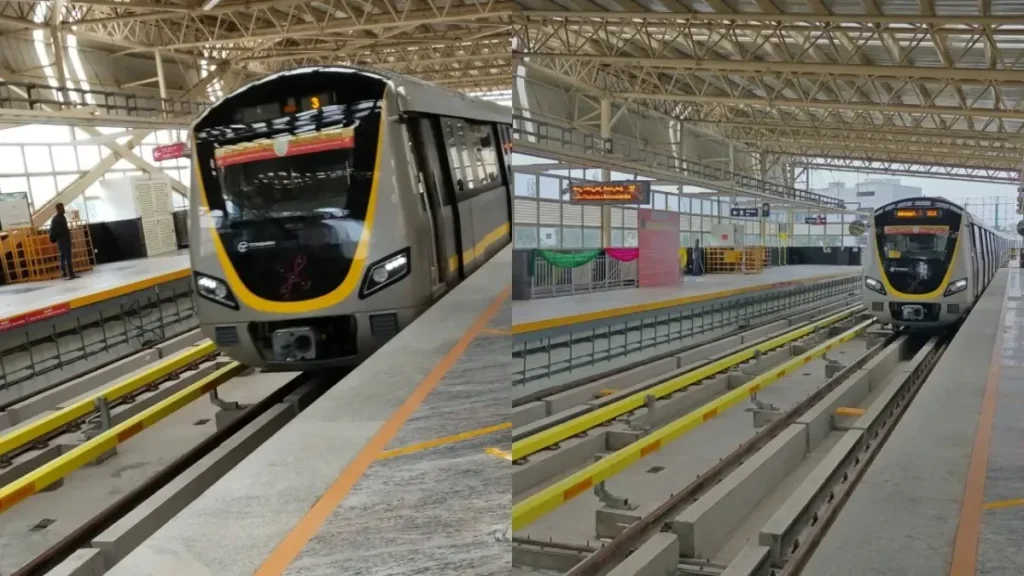The new 19-km Yellow Line eases congestion on Hosur Road and boosts metro ridership, but overcrowding and limited train frequency remain challenges.
Yellow Line impact on traffic
The launch of Bengaluru Metro’s Yellow Line has already shown results on city traffic. Since operations began on August 10, congestion on Hosur Road has dropped by nearly 10%. The effect was most visible at the dreaded Silk Board Junction, where peak-hour gridlocks have eased.
Evening rush hours (4 pm to 9 pm) saw traffic fall by nearly a third, while morning congestion also dipped in the following days. Officials say the trend reflects office-goers in Electronic City and nearby IT hubs shifting from private vehicles to metro travel.
Also Read:Namma Metro’s Yellow Line fuels Purple Line overcrowding woes in Bengaluru
Surge in metro ridership
The new line has also powered a sharp jump in Namma Metro usage. Daily ridership has risen from 8 lakh to over 10 lakh, with more than 50,000 commuters boarding the Yellow Line alone. For many, the corridor has become a faster and more reliable link between southern Bengaluru and employment zones.
Also Read:Bengaluru’s Yellow Line chaos: Passengers forced to floor-sit amid 25-min waits
Overcrowding and frequency issues
While the ridership boom is a positive sign, it has created overcrowding at key stations such as RV Road, Infosys Konnappana Agrahara, and Electronic City. With only three trains currently running at 25-minute intervals, passengers face long waits and packed coaches.
To handle the swelling crowds, BMRCL has deployed extra security staff and is planning to add more trains soon. Officials say the focus now is to reduce waiting times and provide smoother travel as more commuters make the switch from road to rail.
Also Read:
1.Fourth train set joins Bengaluru metro’s Yellow Line fleet- Here’s what’s coming next

